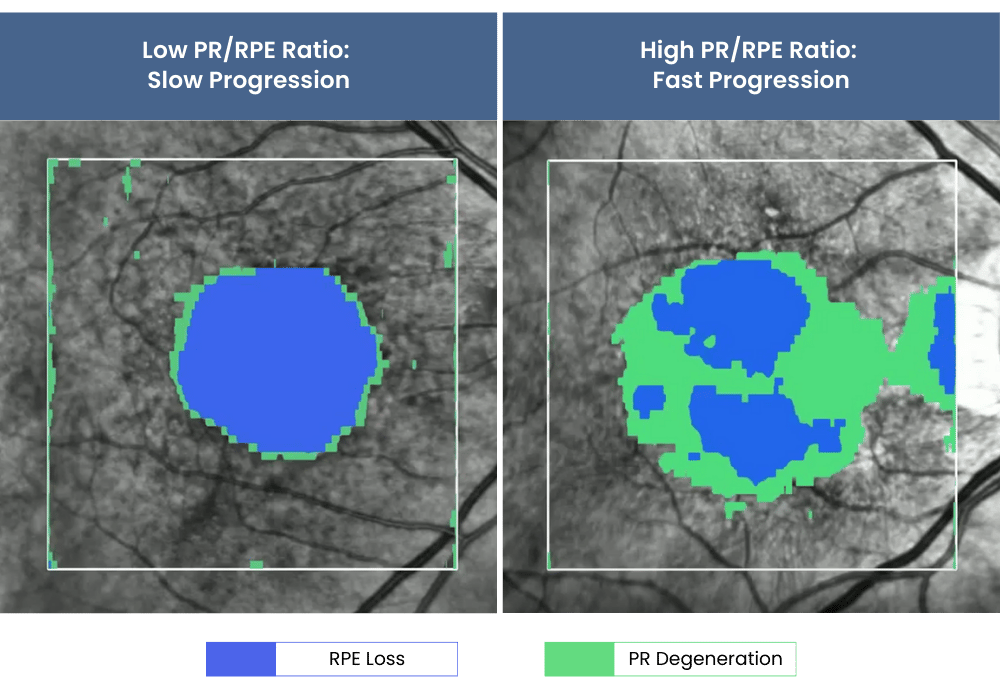Clinical Research
Geographic Atrophy
Enhance the success of your GA study
Increase your study’s probability of success by leveraging insights from historical GA trials.
Our GA tools are designed to optimize patient selection and enrich your study with participants showing high disease activity, thereby increasing the likelihood of statistically significant efficacy readouts at early timepoints with the minimum number of enrolled patients.


Source: Ursula Schmidt-Erfurth et al. | Disease activity and therapeutic response to pegcetacoplan for geographic atrophy identified by deep learning-based analysis of OCT
RetInSight’s GA Monitor
RetInSight’s GA Monitor is the only AI-based tool that provides immediate insights into the most critical biomarkers in geographic atrophy:
- Retinal pigment epithelium (RPE) loss1,
- photoreceptor (PR) degeneration (also known as EZ layer loss)2,
- and the overlap of both 3 4 5
This data helps differentiate between fast and slow progressors using the PR/RPE ratio, allowing you to assess disease activity accurately.
Understanding Disease Activity:
- Fast Progressor = High Disease Activity
- Slow Progressor = Low Disease Activity

Source: Ursula Schmidt-Erfurth et al. | Disease activity and therapeutic response to pegcetacoplan for geographic atrophy identified by deep learning-based analysis of OCT
Benefits of using the GA Monitor in your clinical study
- Comprehensive reporting: All key parameters are displayed in a single report, making it easy for monitors and auditors to review.
- Informed decision-making: Treatment decisions can be made based on real-time reading results.
- Visual assessment: En-face images enable visual scan checks.
- User-friendly integration: Easy upload process with no special equipment required; compatible with any web browser.
- Enhanced patient communication: Detailed reports facilitate patient communication, supporting patient retention.
- Secure data management: All reports are stored within the system and can be reprinted at any time.
Our team of clinical, scientific, and AI experts is ready to bring our extensive expertise to your trial. Contact us to learn how we can support your study’s success!
References
- Sophie Riedl et al. | The Effect of Pegcetacoplan Treatment on Photoreceptor Maintenance in Geographic Atrophy Monitored by Artificial Intelligence – Based OCT Analysis
- Julia Mai et al. | Comparison of Fundus Autofluorescence Versus Optical Coherence Tomography–based Evaluation of the Therapeutic Response to Pegcetacoplan in Geographic Atrophy
- Wolf-Dieter Vogl et al. | Predicting Topographic Disease Progression and Treatment Response of Pegcetacoplan in Geographic Atrophy Quantified by Deep Learning
- Ursula Schmidt-Erfurth et al. | Monitoring der Progression von geografischer Atrophie in der optischen Kohärenztomographie
- Ursula Schmidt-Erfurth et al. | Disease activity and therapeutic response to pegcetacoplan for geographic atrophy identified by deep learning-based analysis of OCT